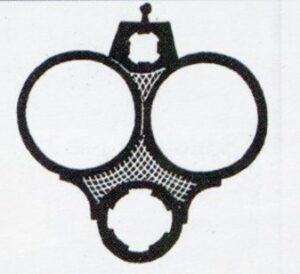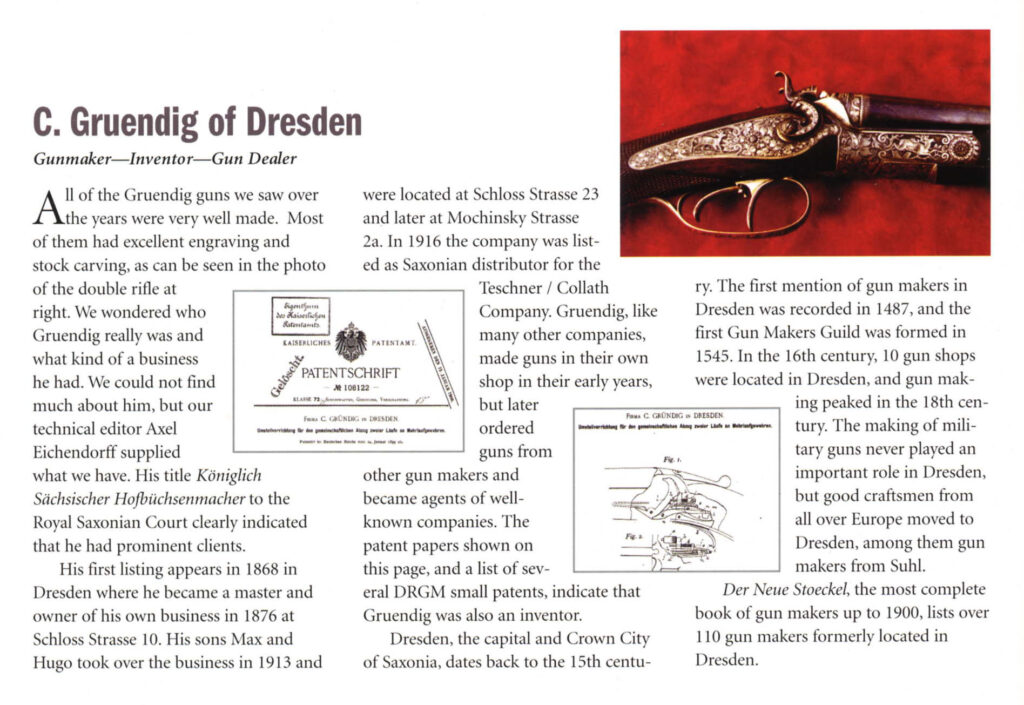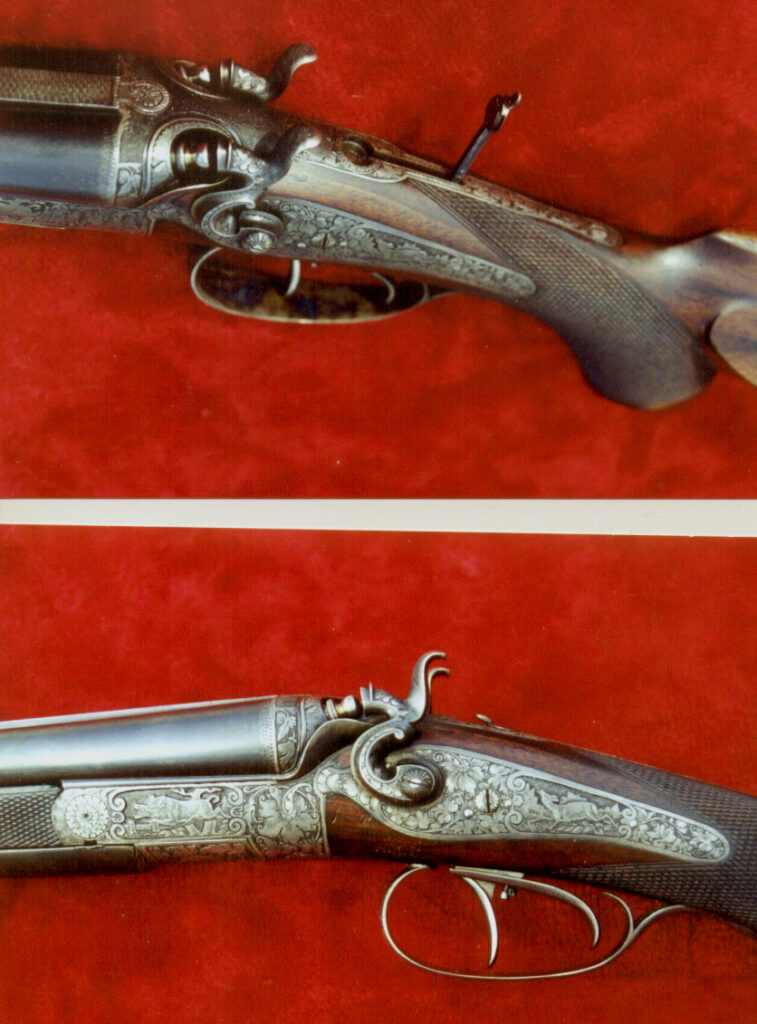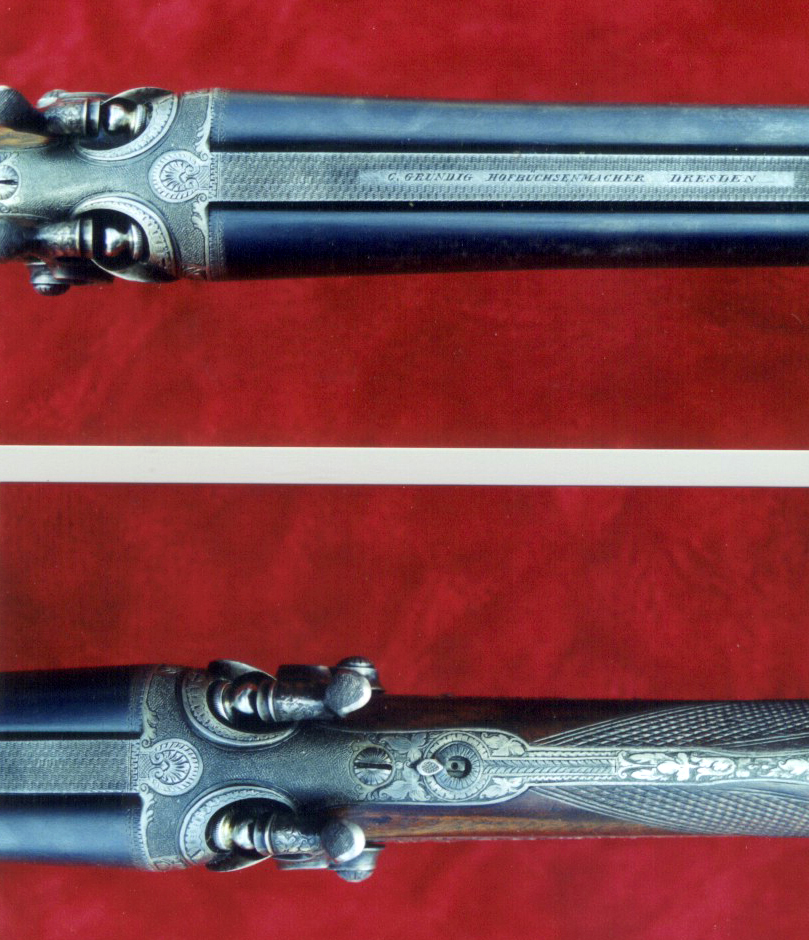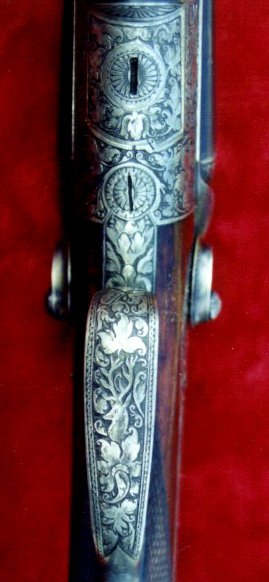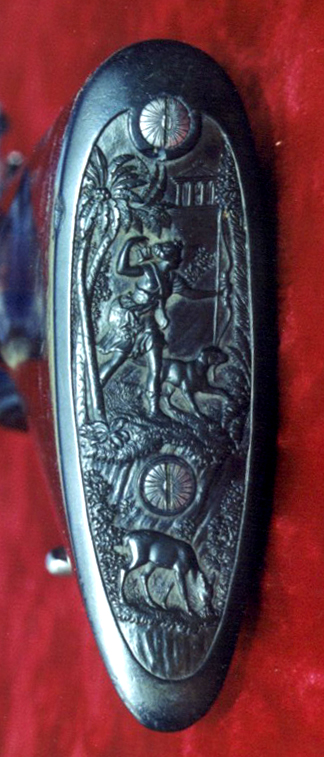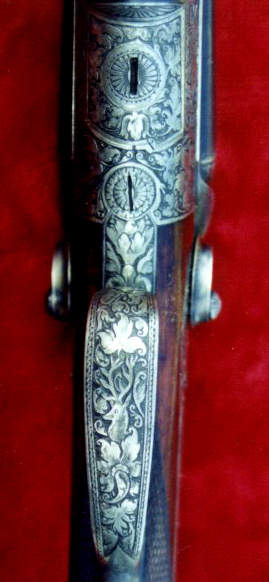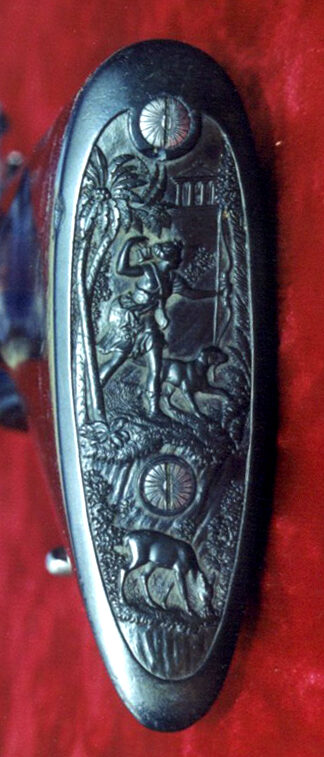Gründig-Gruendig, Carl-Dresden

The following was found in Dietrich Apel’s digital Archive and is from an unknown source (possibly Axel Eichendorff).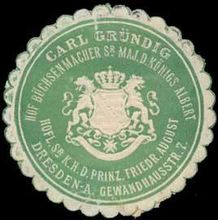
Carl Gründig (c1852-1913) of Dresden was an Inventor, Gunmaker and Gun Dealer. He served an apprenticeship as a gun maker from as early as 1868 becoming a Master Gun Maker in 1876. He owned his own business shortly after, establishing a Rifle factory which existed from c1890 to early February 1945 when Dresden was bombed. He was appointed as Königlich Sächsischer Hofbüchsenmacher to the Royal Saxonian Court by his Majesties Albert (1873-1903), Georg (1902-1904) and Friedrich Augurs III (1904-1918). Thereafter his letterhead only listed the title Hofbüchsenmacher. Carl Gründig passed away in 1913 and his business was then managed by his sons; Max & Hugo Gründig .

Although the titles were purchased with a yearly fee and also depended on the right political connections, it gave him prestige and attracted a prominent clientele. Dresden was the capital and Crown City of Saxonia and had attracted many Gun Makers since the founding of a Gun Makers Guild in 1545, among them gun makers from Suhl. Some of the finest guns made in Suhl were made for the Court in Dresden.
In the early years Gründig bought machined gun components made in Belgium and also in Suhl because he did not have the machines to do it himself. He must have also ordered completely finished guns and had his name engraved on them. He had several patents granted for weapon technology including #108122 in 1899/1900 for his own non-selective single trigger mechanism.

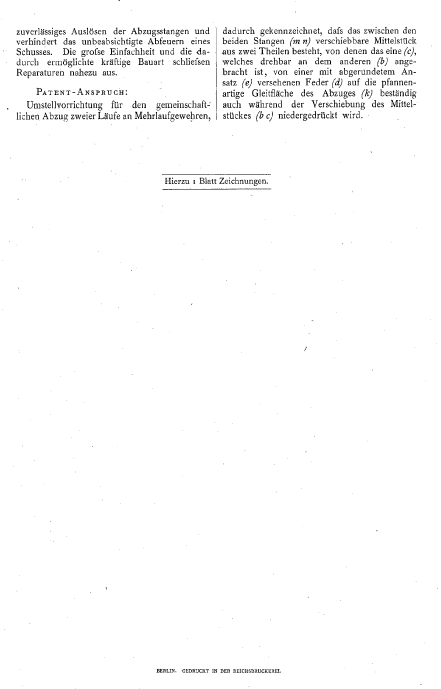
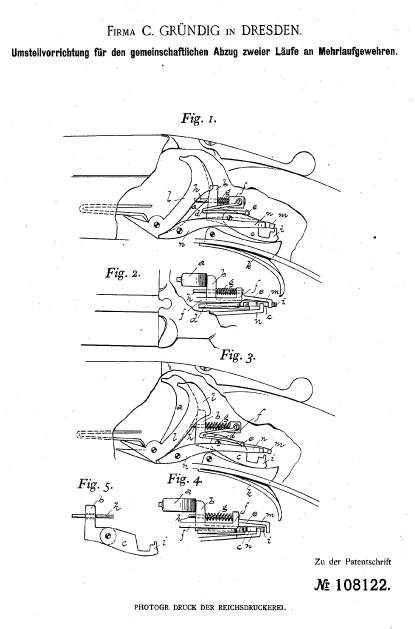
In 1916 the company became the representative for Saxonia of the Gunmakers Teschner and Collath. After Word War I (1914-18) the two sons continued the business mostly as a retail store and a shop to service the guns they ordered and sold. The business existed until early in February 1945 when Dresden was bombed by British and American planes that resulted in a firestorm that killed over 22,000 people and left the whole city in ruins.
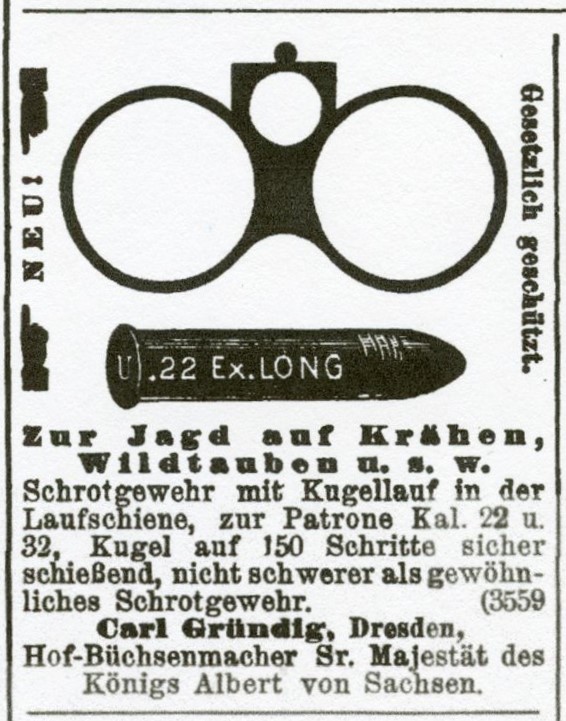
Gründig is also known for bullet designs towards the end of the 19th century. The Gründig name is also associated with a set of four German rimmed cartridges all utilising the same case head diameter of 12.5mm. There was also a series of rimless cartridges using this head size (see G Mauser Cartridges). The rimmed 10.75mm calibers all utilise different lengths of the same case type with a 12.5mm base and a 13.8mm flat rim. Apparently introduced by Utendoerffer c1898 for Gründig rifles (??). Sometimes referred to as Target calibers, these are more correctly Sporting calibers as most examples encountered utilise the proprietary Gründig flat top SP bullet as shown in the 1911 Alfa catalog (see right) which is only known in 10.75mm caliber but was copied in other calibers. Shown in RWS/Utendoerffer catalogs from c1900 under the Smokeless powder types as type “G” which is generally agreed to refer to “Gründig”. This is a different case type than the Tesching “G” type but it does have a similar base size as the rimless “G” types. Shown in the Alfa catalog as for rifles with drop barrels.
These cartridges were still listed by RWS in 1928 but these were not offered in their 1934 catalog. These calibers were however still listed as available in the 1931 Gecado catalog and some were also listed by DWM and Roth. Only specimens with the “H.UTENDOERFFER NURNBERG” hs are known to exist and all of these calibers are scarce today. The 10.75 Gründig rimmed cartridges are:
10.75x45R (GSP1)
10.75x52R (GSP2)
10.75x60R (GSP3)
10.75x65R (GSP4)
Also the rimless 9.3x63G (M56) and 10.75x63G (M57) are sometimes referred to as Gründig (see ‘G Mauser cartridges) but it is unconfirmed whether Gründig had anything to do with the introduction of these cartridges.
At some odds with the above is the following found in the 1914 edition of the Geschichte Der Olbernhauer Gewehrindustrei by Alfons Diener Schönberg
“The life of the former craft continued only in weak threads. The last gunsmiths from Olbernhau were Johann Karl Rauer, who died in Rothenthal in 1901 at the age of 93, and Carl Josef Gottlob Gründig, who died in Neiderneusschönberg in 1911 at the age of 90; Both were known far beyond their local area for their good performances. Today there are no gunsmiths working in Olbernhau anymore, and people there have almost completely forgotten that such a strong rifle industry once existed in the area. The well-known court gunsmithery of Carl Gründig in Dresden is a direct extension of the Olbernhau master gunsmith Johann Gottlob Gründig, joined Dresden in 1847 as a military gunsmith and worked as such until 1876. That year he said goodbye, and since the rifle factory in his home town of Olbernhau had since closed down, he founded a gunsmith’s shop in Dresden on his own. Through his efficiency, he soon brought this company to fruition. He died at the age of 69 in 1896, and his sons, Max and Hugo Gründig, have continued the work in their father’s spirit ever since.”
The above referance also lists gunmakers working in Olbernhau throgh the years starting in 1744-
Christian Gründig-Büchsenmacher
Christoph Gründig-Büchsenmacher
1773-
Johann Christoph Gründig-Büchsenmacher
Gottlob Gründig- Schäfter
1779-
Christoph Gründig-Büchsenmacher
Christoph Gottlob Gründig- Schäfter
1818-
Johann Gottlob Gründig-Büchsenmacher
1827-
Johann Gottlob Gründig- Büchsenmacher
1853-
Josef Gottlob Gründig-Büchsenmacher
I believe that Gründig had some sort of business relationship with Störmer of Herzberg. I have a side lever, hammer drilling marked “ASHE” on the water table of the receiver and Carl Paubel on the top rib. It was no doubt made by Störmer and sold by Carl Paubel in Suhl. The structure of the guns (both the Gründig on this page and the Störmer/Paubel) and the engraving and Gold inlay appear to be by the same men or firm. Click HERE to see the Carl Paubel Drilling. (LBS).
The following article was written by Dietrich Apel and appeared in the Der Waffenschmied No. 37, Fall 2008
A Hammer Vierling by Carl Gründig
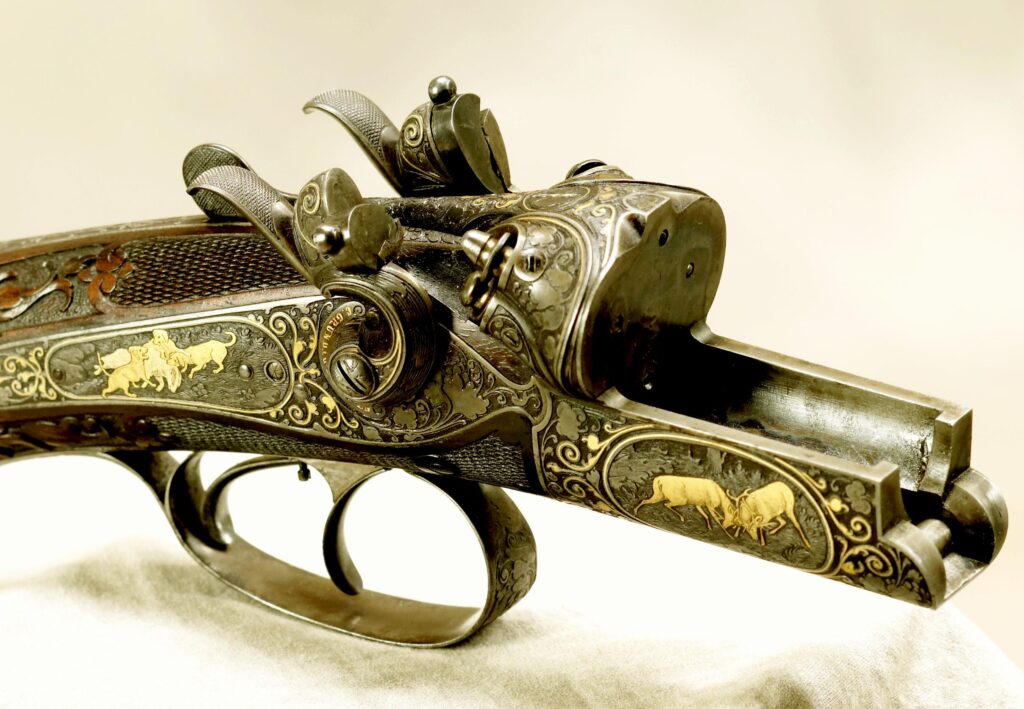
Quite a few gunmakers had found various ways to use one of the back action hammer locks to fire two barrels selectively. But the idea to use both locks to fire four barrels in a similar fashion must have come to a determined and well heeled customer of the gunmaker Gründig in Dresden, who made the Hammer Vierling shown on these pages. I had never seen such gun until the owner emailed me photos. I knew right away that I wanted to show this gun in our Journal, and in a call to Aaron Hagens he agreed to have good photography done. For this we give him our sincere thanks.
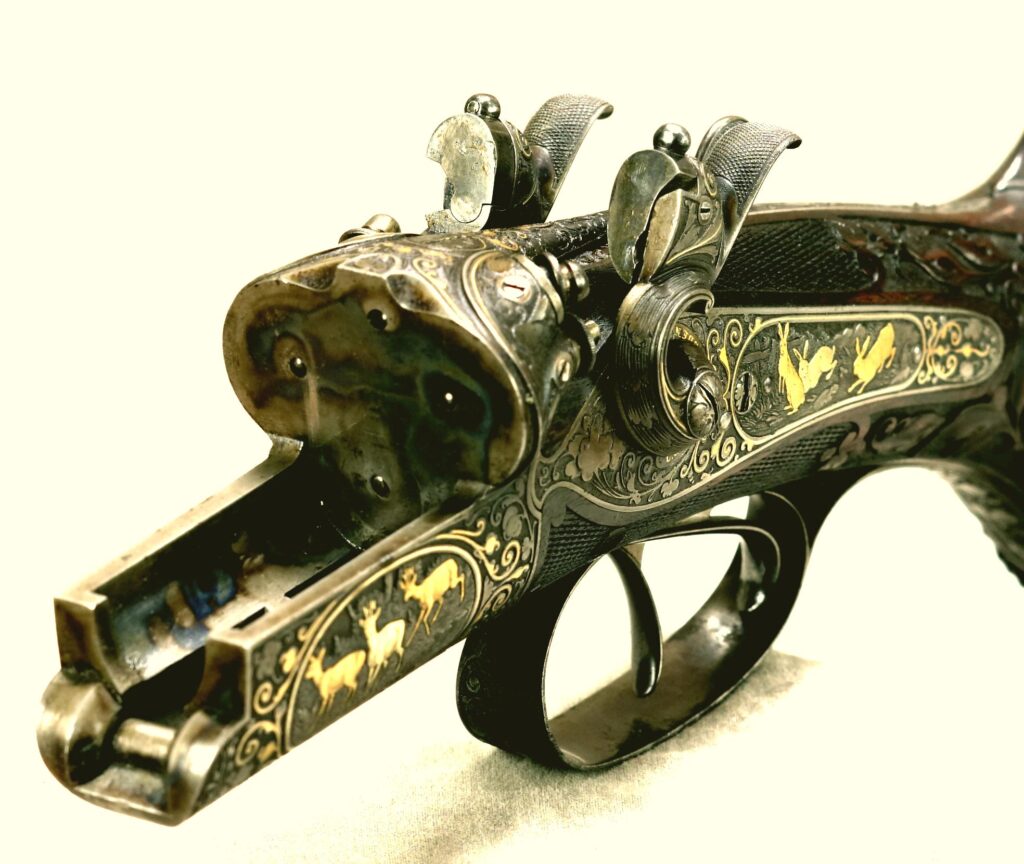
We have seen quite a few hammer Drillings with a pivoting hammer head as a selector that could be shifted side to side. Gründig used a different approach by installing a hinged contact plate with knobs at the end of each hammer. When this knob stands upright, the plate hits the rifle firing pins. When the knob is turned downward, a gap opens up behind the rifle firing pin, allowing the hammer to bypass the rifle firing pin to hit the shotgun firing pin.
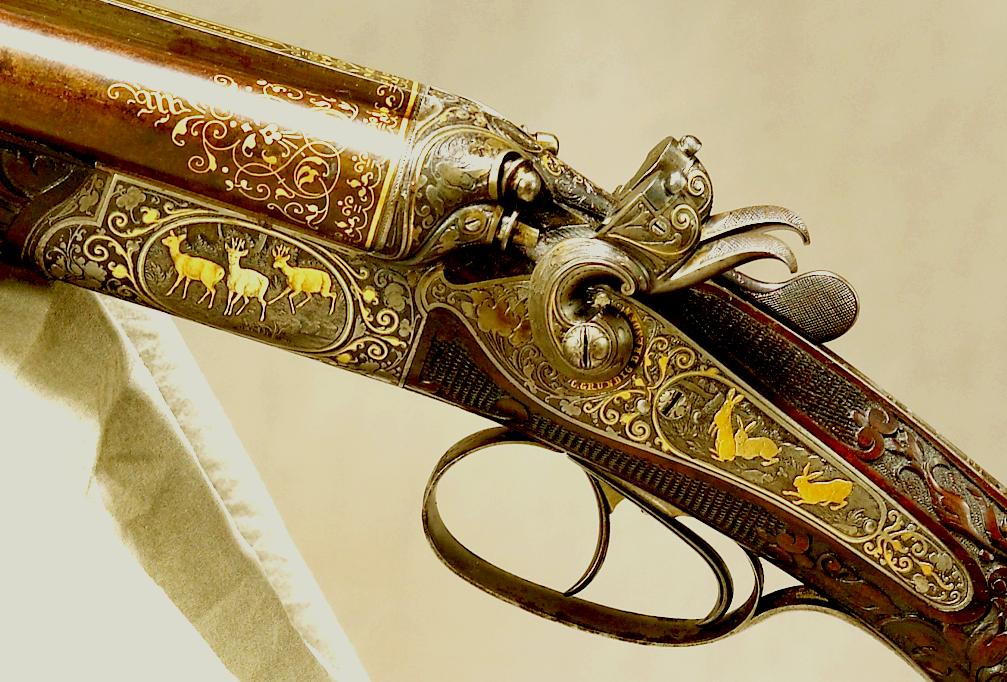
If you take a closer look at the rear ends of the firing pins, you will see that most of them are well rounded and that the one for the small bore rifle barrel in the top rib is cone shaped. The problem I encountered repeatedly on hammer Drillings during my years as a gunsmith were the misfires of the rifle barrel on hammer Drillings due to the extreme angle the firing pin hits the primer.
The rounded or cone shaped firing pin heads create less friction between the firing pin and the face of the hammer. Back action side locks usually have very strong springs, but Blitz locks and box locks have much smaller and less powerful springs. On the pages that follow we will see how one inventor overcame this problem on another unique gun.

The small bore rifle barrel on this Vierling is located in the top rib, and these guns are called Schienen-Drilling or Schienen-Vierling. The German word for rib is Schiene. At the time when this gun was made this was very acceptable and also used much later in Schonzeit Drillings (off-season guns) that handled like a side-by-side shotgun. The disadvantage in having this barrel in the rib is that automatic rear sights are not possible and scope mounting becomes much more involved.
